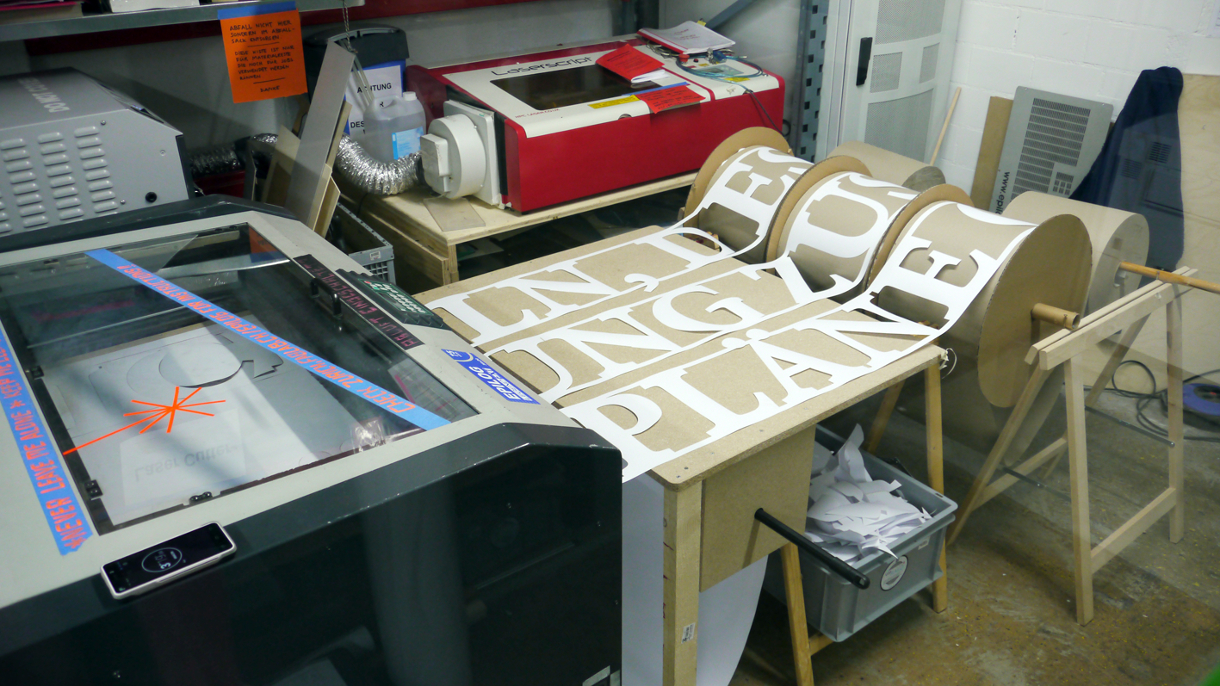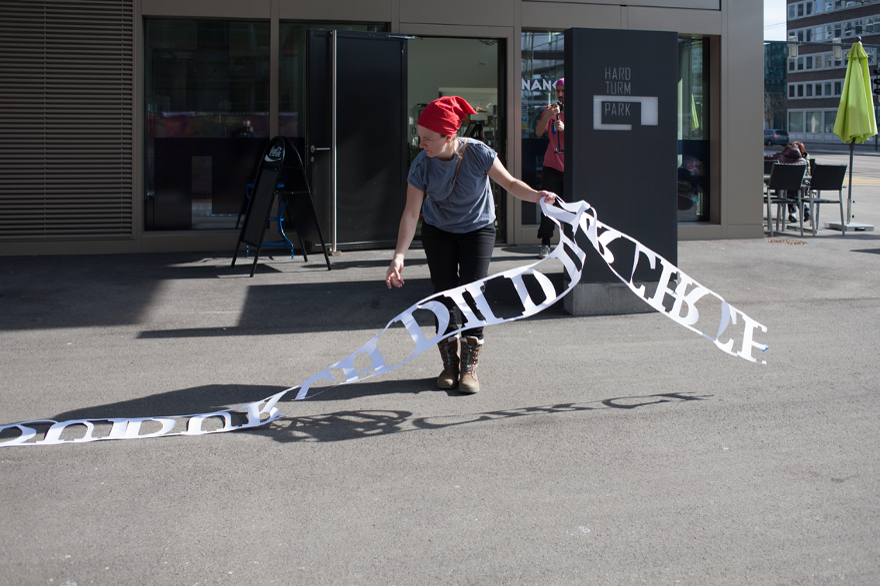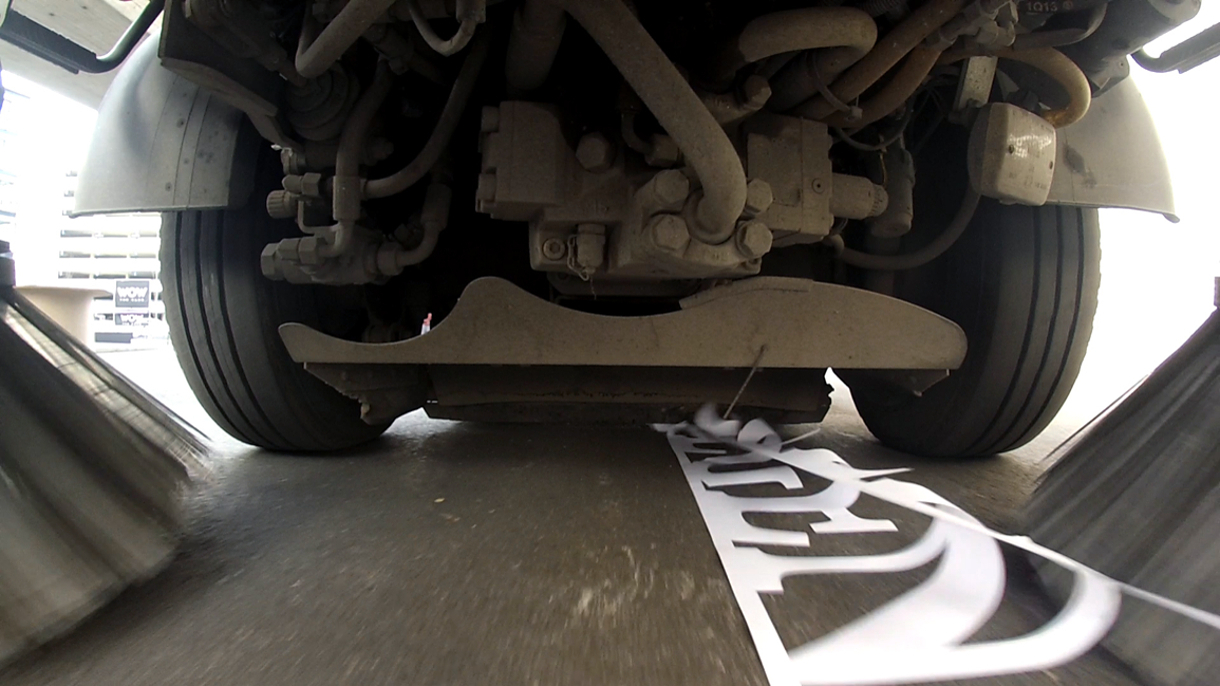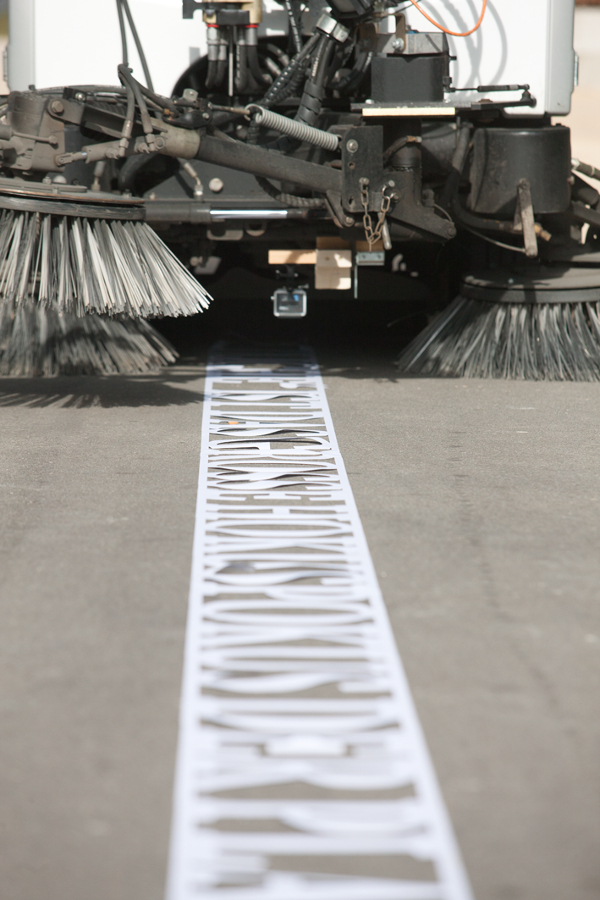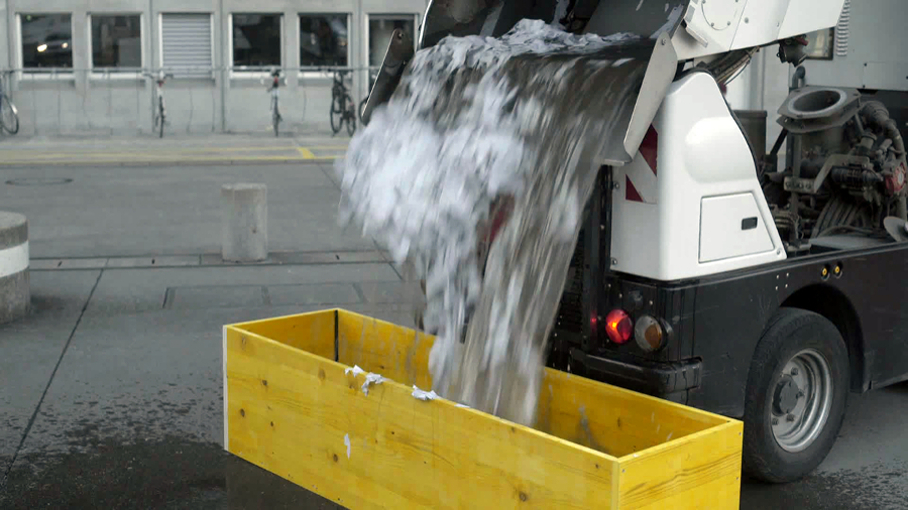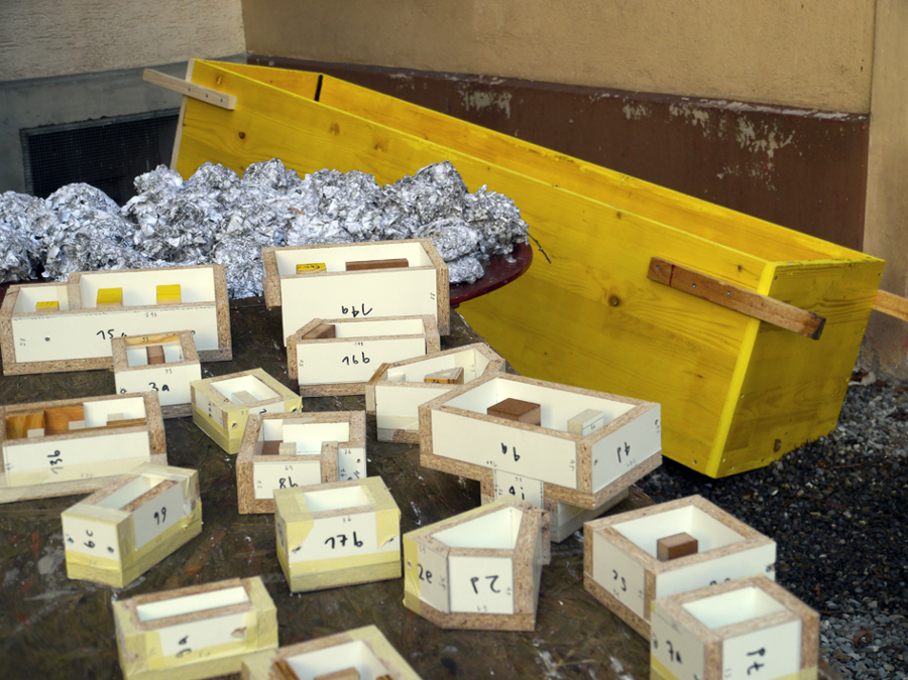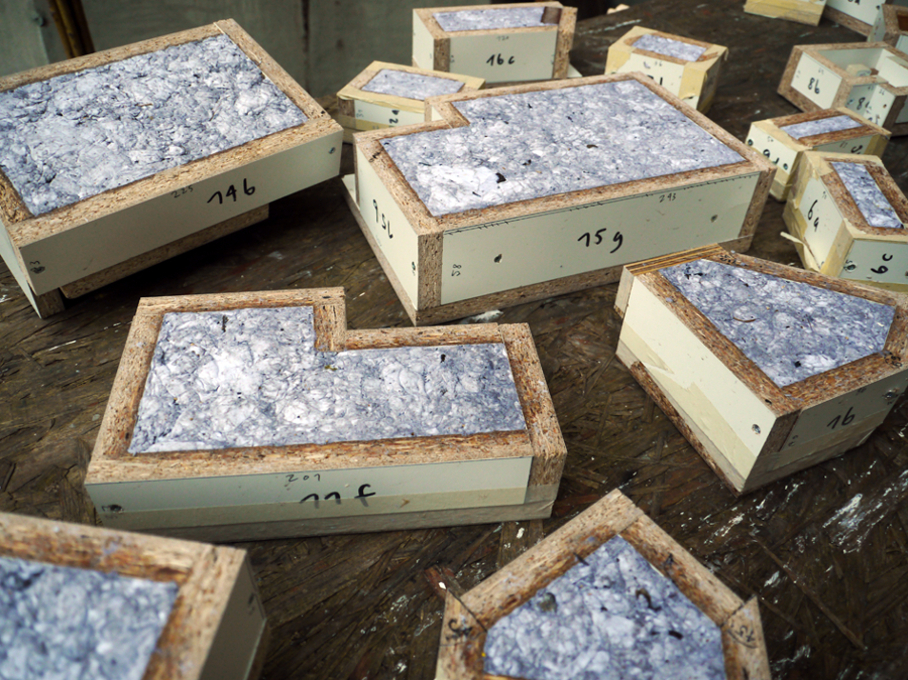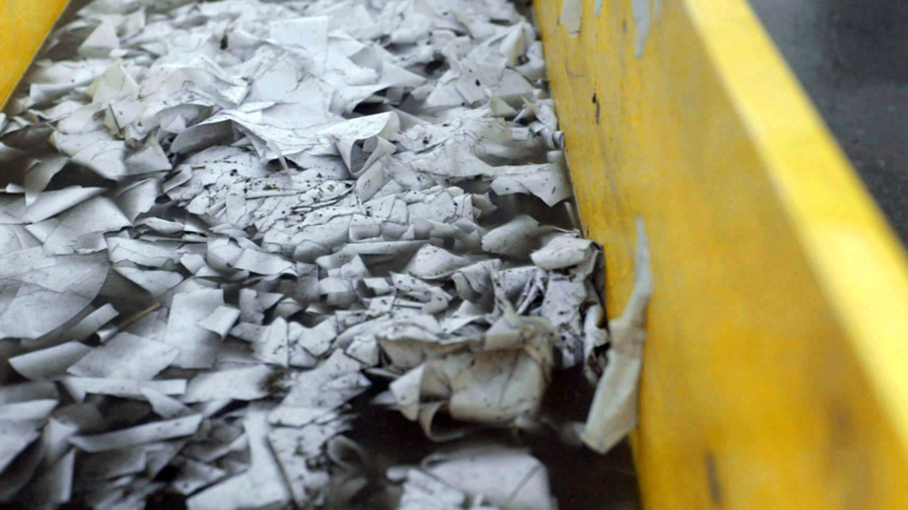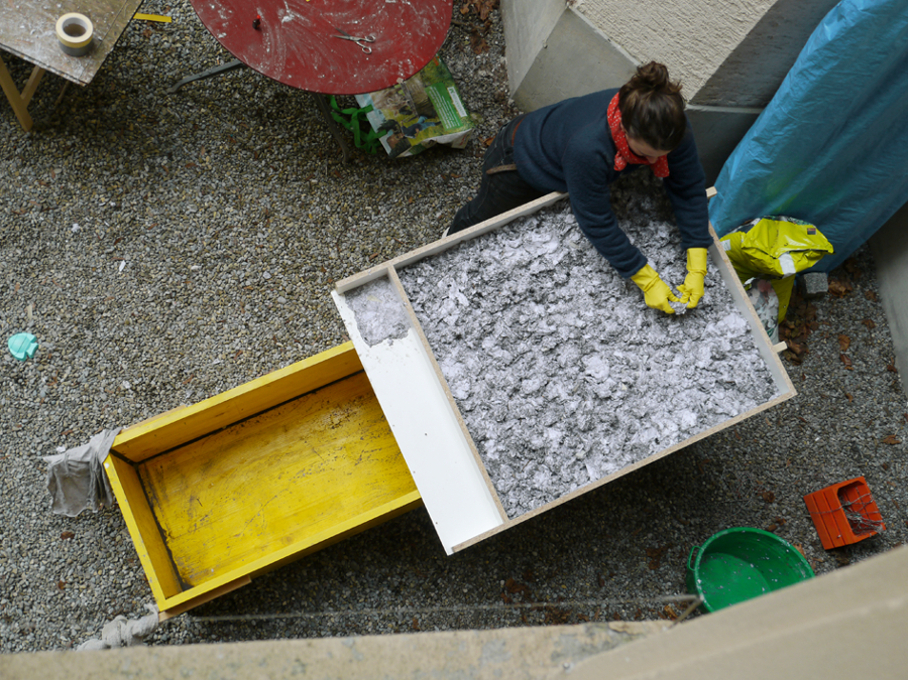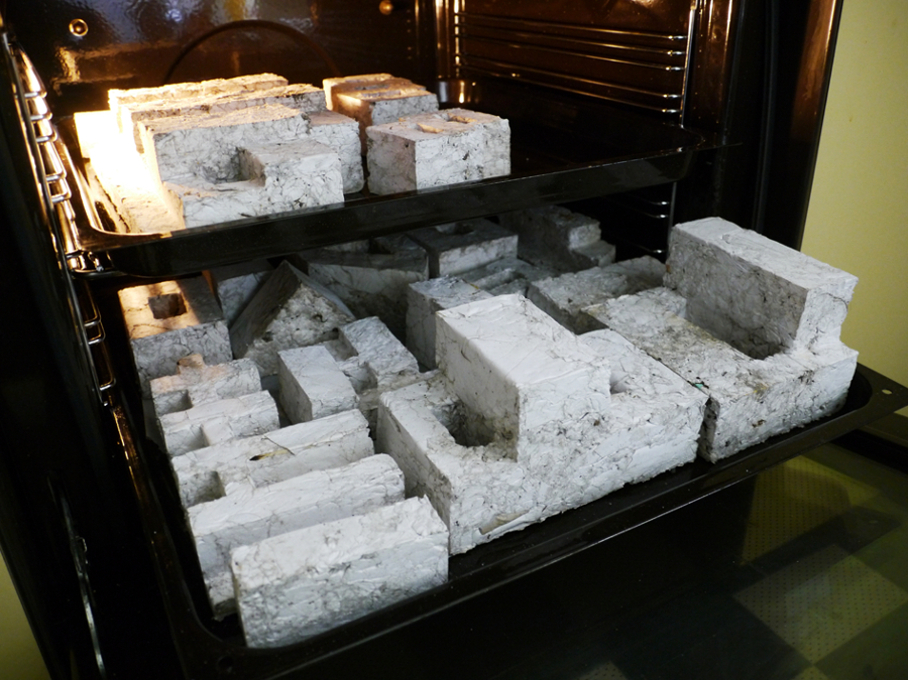Densification
With Tom Stäubli
2015
A homage to Lucius Burckhardt
In the framework of „Invent the future with elements of the past“
A Project of STEO Stiftung, in Collaboration with Hans Ulrich Obrist and Adrian Notz
A street sweeper of the City of Zurich, equipped with two cameras, examines Zurich West as a “promenadological sensor” and creates a visual record. In order to do this, pieces of paper with excerpts from Lucius Burckhardt’s text “Between patchwork and conceptual design” are placed on sidewalks in front of buildings that were developed in the context of the development plan for Zurich West. The texts are sucked up and digested by the street sweeper. One camera films the floor space driven along with the text, the other one observes the building facades. The two videos are shown as a two-channel video projection. From the resulting papier mâché, consisting of the paper text, water and street dirt, a model of the planned volume of the next major urban project is formed: “Masterplan university area of Zurich”. This model is presented in the exhibition along with the video recordings.
In the catalogue the used text excerpts are presented as legible collages. The paper text ribbons on the sidewalks have been photographed bit by bit and been recomposed. These text-collages are accompanied by pictures documenting the act. The following text and image material corresponds to the catalogue contribution, in a sligtly different layout.
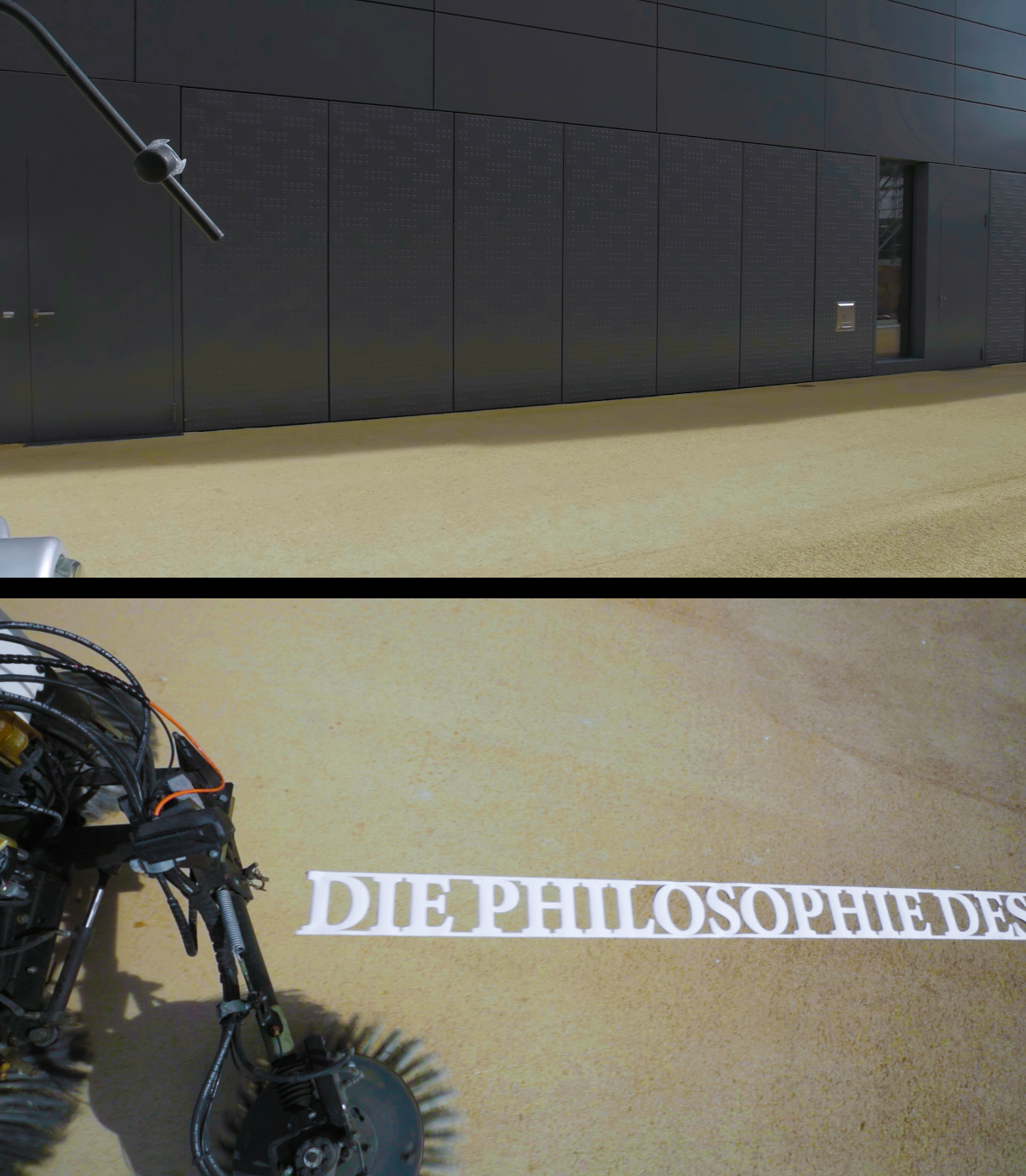
2-channel video projection, color, sound, 18‘16“
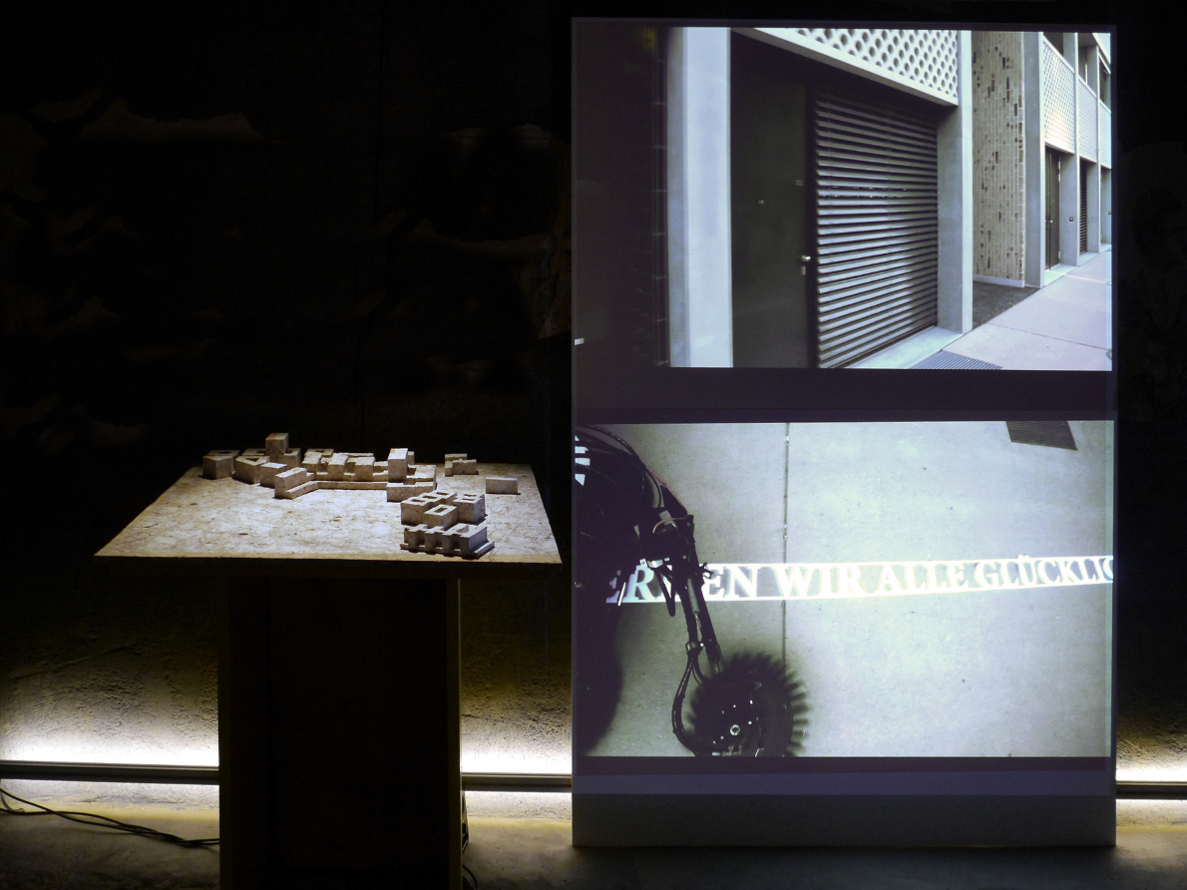
Exhibition view with video projection and model
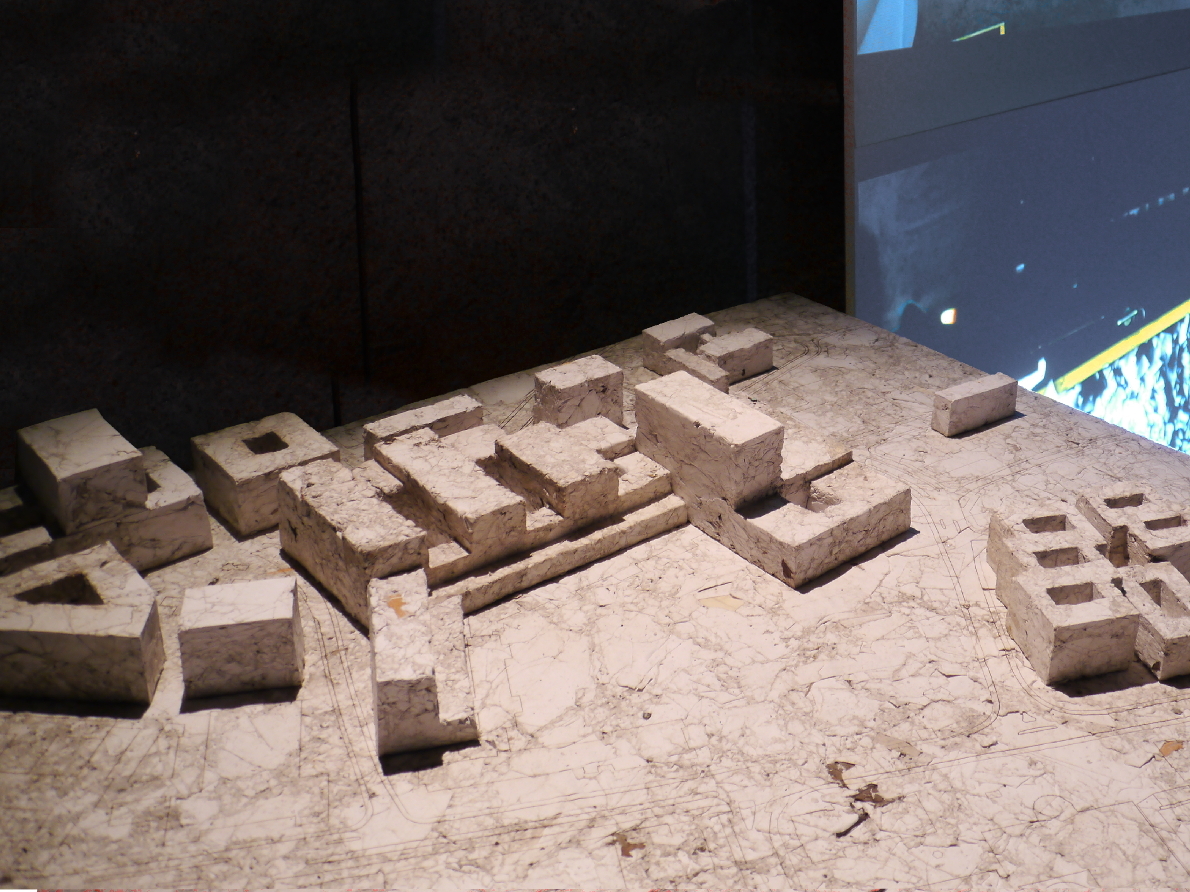
Model, 110 x 98 x 87 cm
Form boards, silicone, compacted sweeped up material (paper text ribbons, street dirt)The model is based on communication material to the "Masterplan university area of Zurich" as of September 2014.
(Excerpts from the seven points of criticism raised in a lecture from 1982).
From: Lucius Burckhardt, Wer plant die Planung? Architektur, Politik und Mensch, edited by Jesko Fezer and Martin Schmitz. ISBN 978-3-927795-39-6, Berlin 2004.
© Martin Schmitz Verlag
Translated from the original German by Wordorders
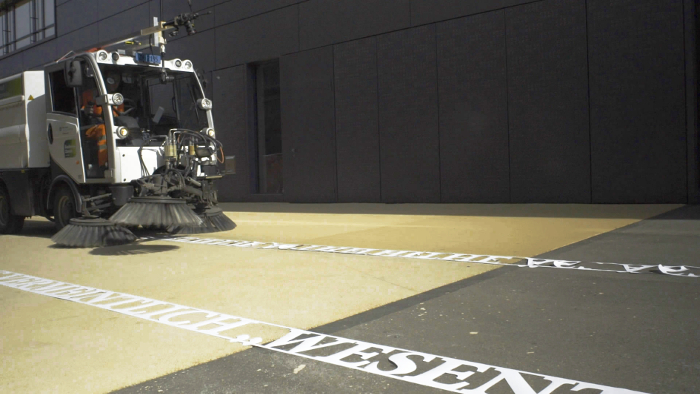
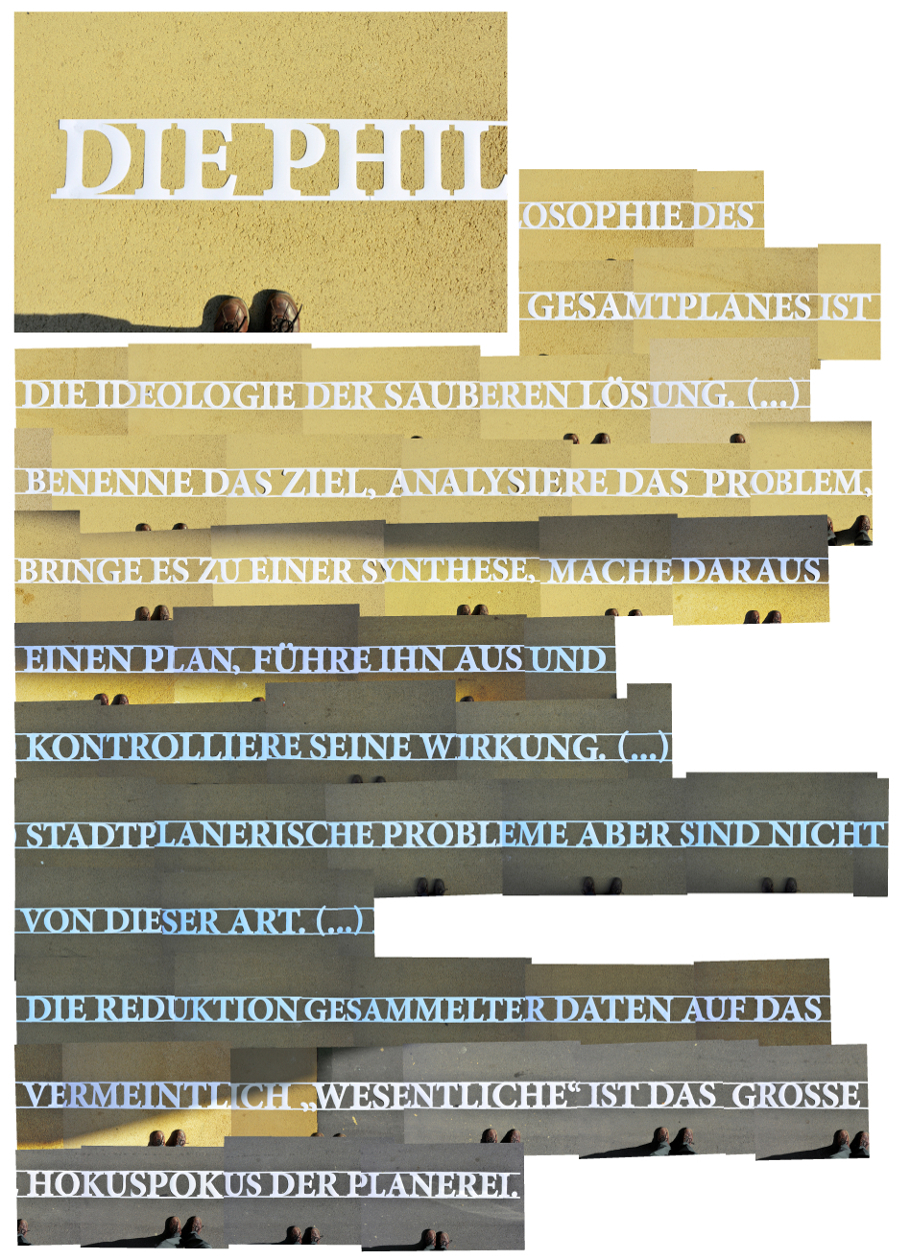
1. Philosophy
The philosophy of the master plan involves the ideology of clean solutions. (…) State your objective, analyse the problem, create a synthesis, develop a plan, execute your plan and control its impact. (…) Problems in urban planning, however, are different. (…) Reducing real data to what is assumed to be “essential” is the great mumbo-jumbo of so-called planning.
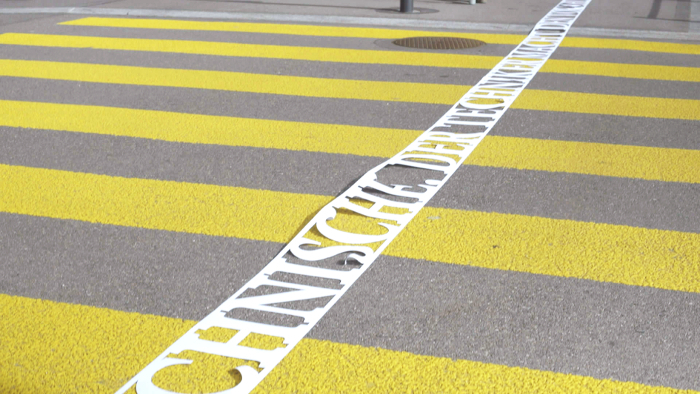
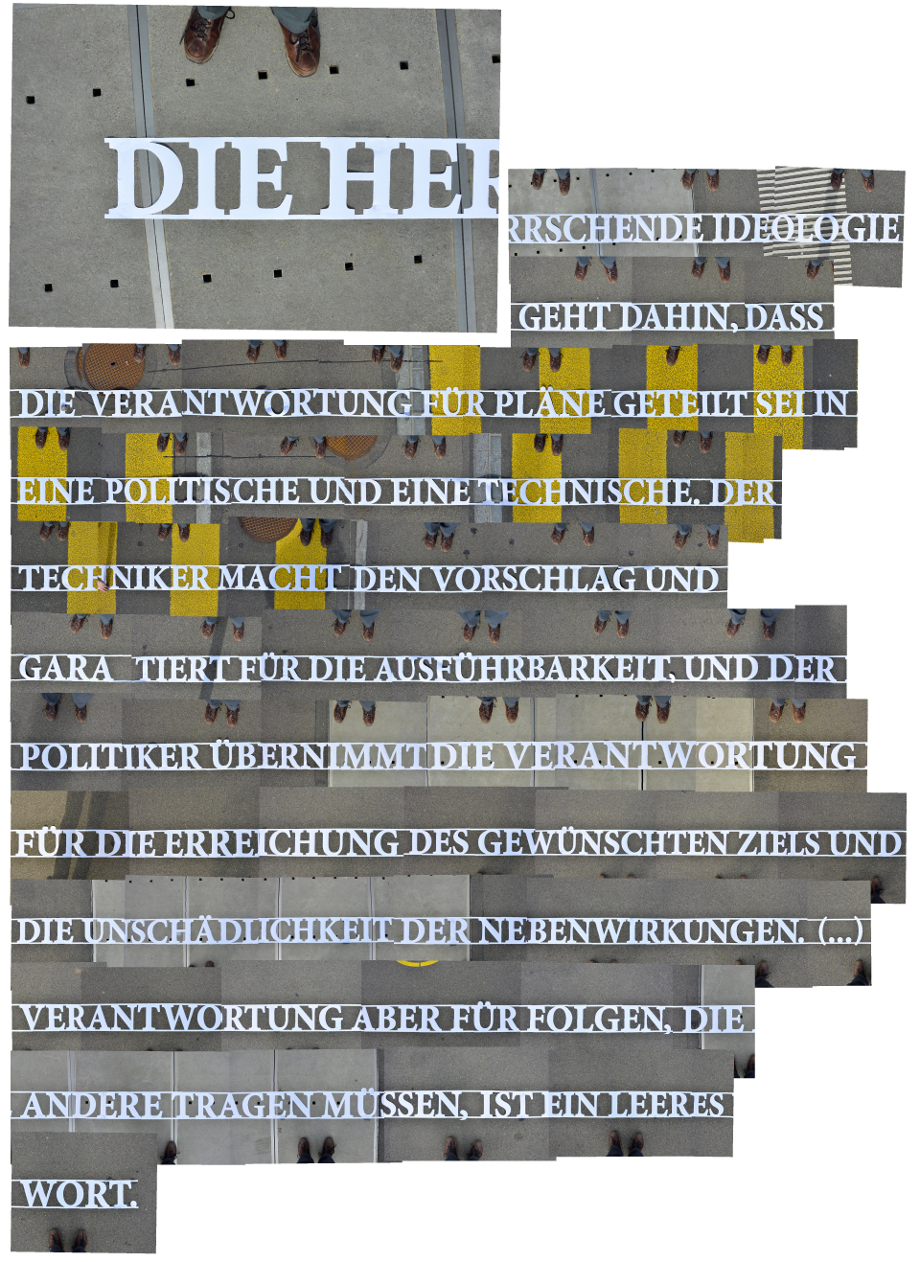
2. Ethics
The prevailing ideology maintains that planning responsibility is divided into political and technical aspects: engineers make recommendations and guarantee their feasibility while politicians assume responsibility for achieving the desired objectives and ensuring the harmlessness of any side effects. (…) However, assuming responsibility for consequences which will be borne by others is nothing but an empty promise.
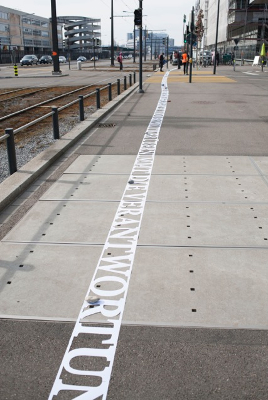
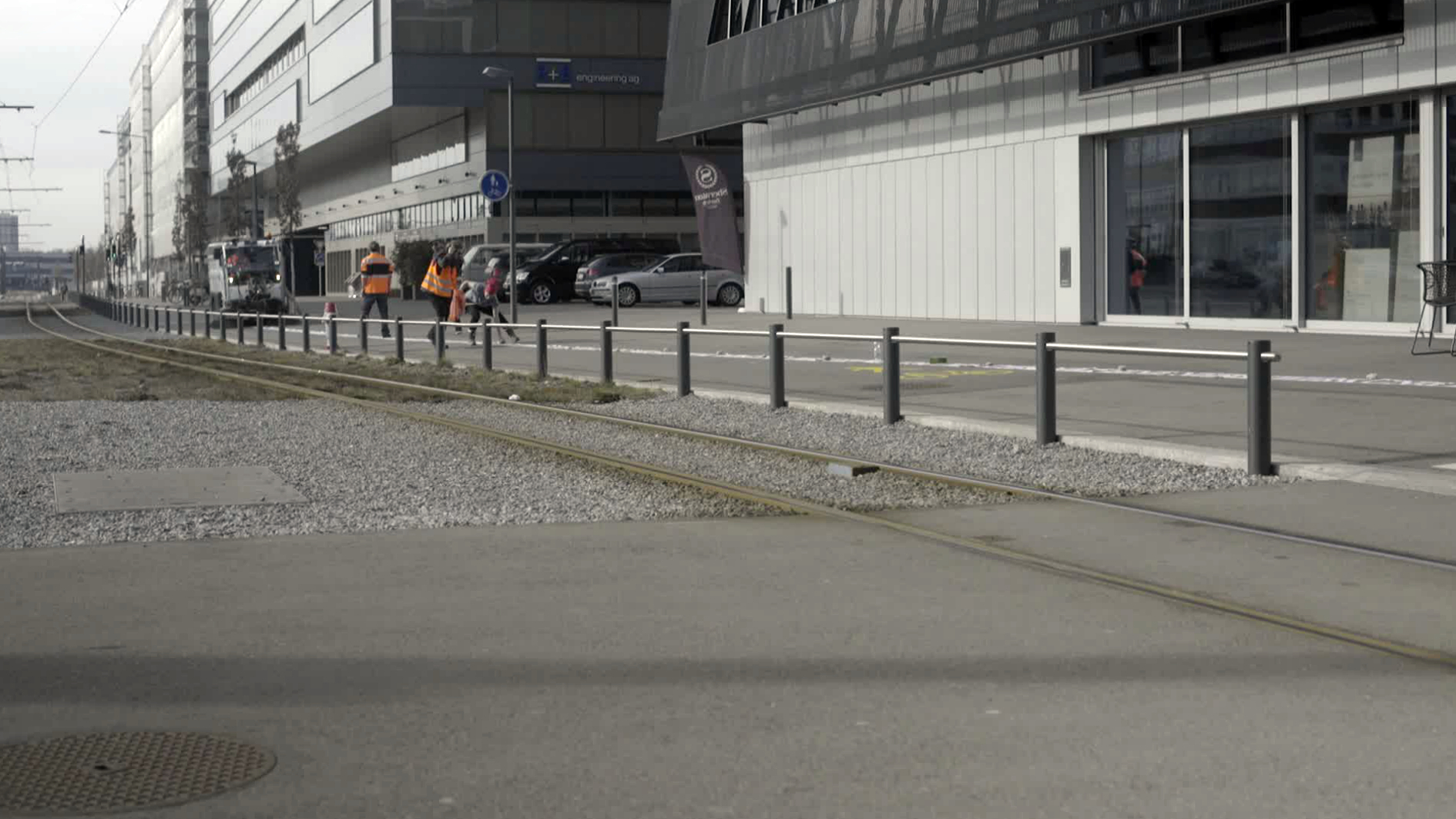
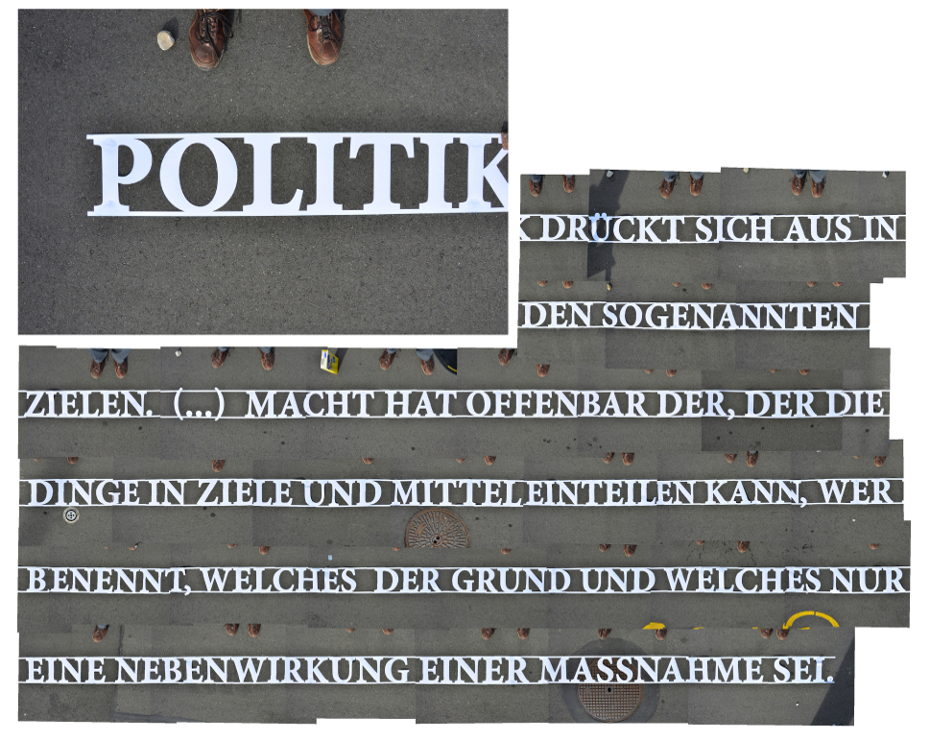
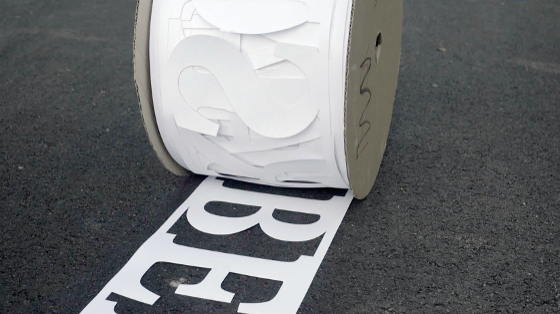
3. Politics
Policy is expressed in so-called objectives. (…) Power appears to be in the hands of those who can divide issues into means and objectives and who are capable of naming the reasons for, and mere side effects of, any actions taken.
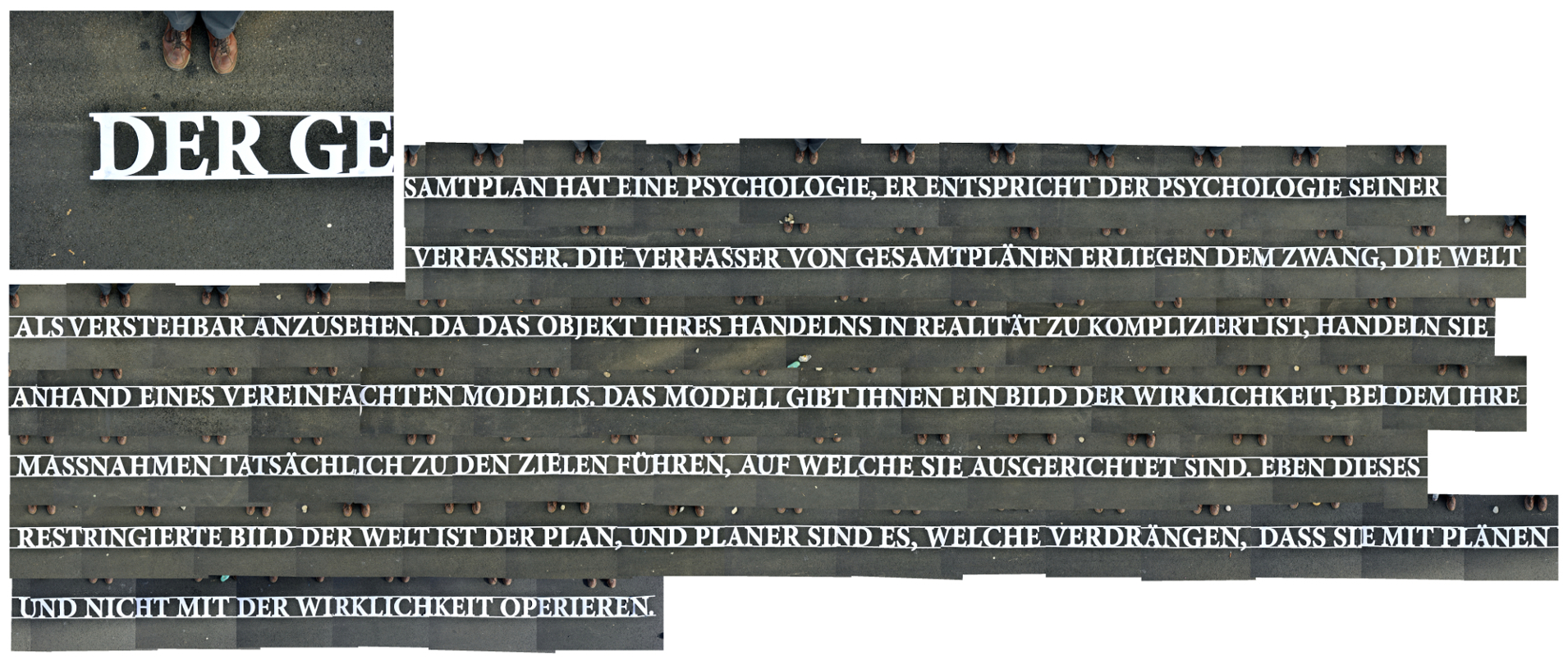
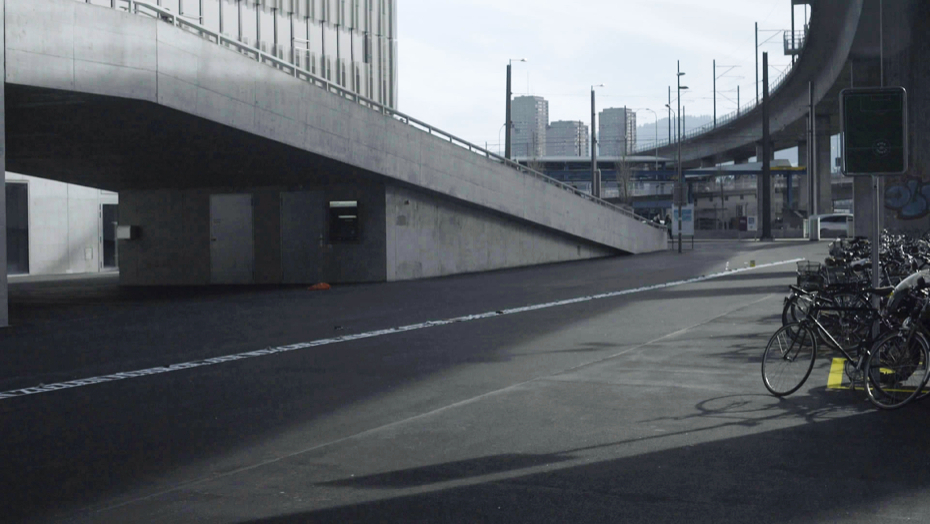
4. Psychology
The psychology of the master plan corresponds to the psychology of its authors. The authors of master plans are compelled to view the world as comprehensible. As the object they are concerned with turns out to be too complicated in reality, they focus their actions on a simplified model. This model represents an image of reality in which the measures taken actually yield the results they are supposed to achieve. A plan is but a restricted image of the world, and planners tend to forget that they operate with plans instead of reality.
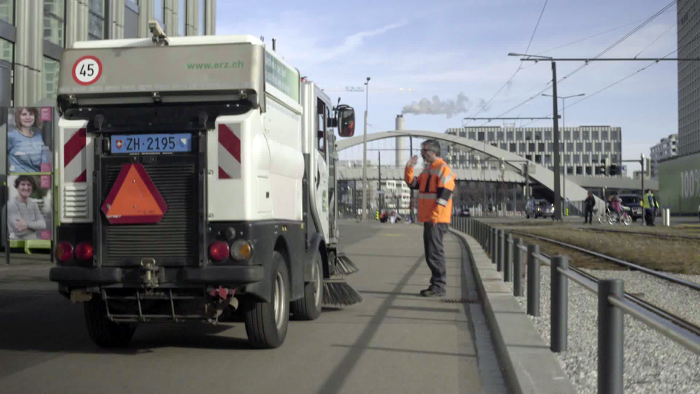
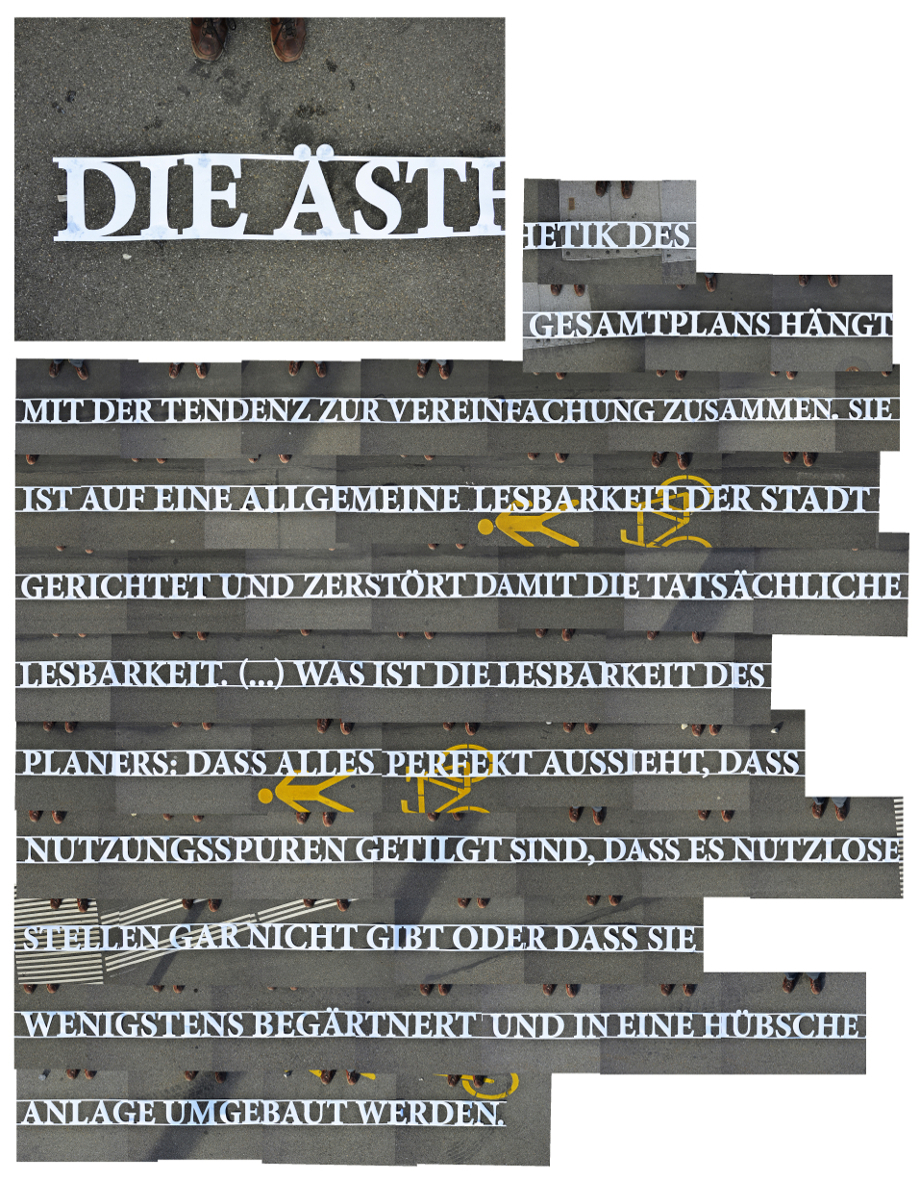
5. Aesthetics
The aesthetics of master plans are associated with a tendency to simplify things. They focus on a general readability of cities, thereby destroying their real readability. (…) What does readability mean to planners? Everything must look perfect, all traces of use must be erased, and useless spaces must be avoided or at the very least neatly landscaped and planted over with greenery.
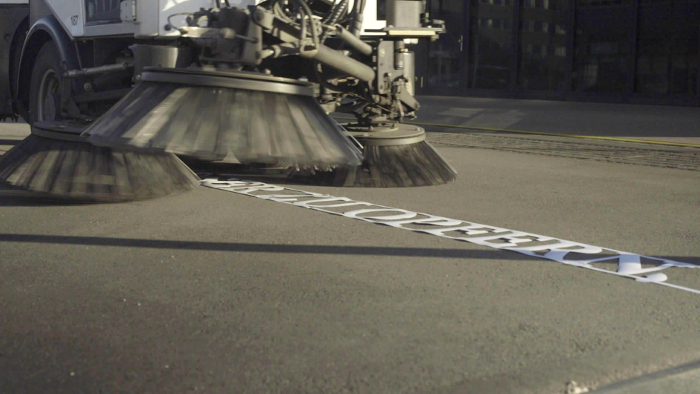
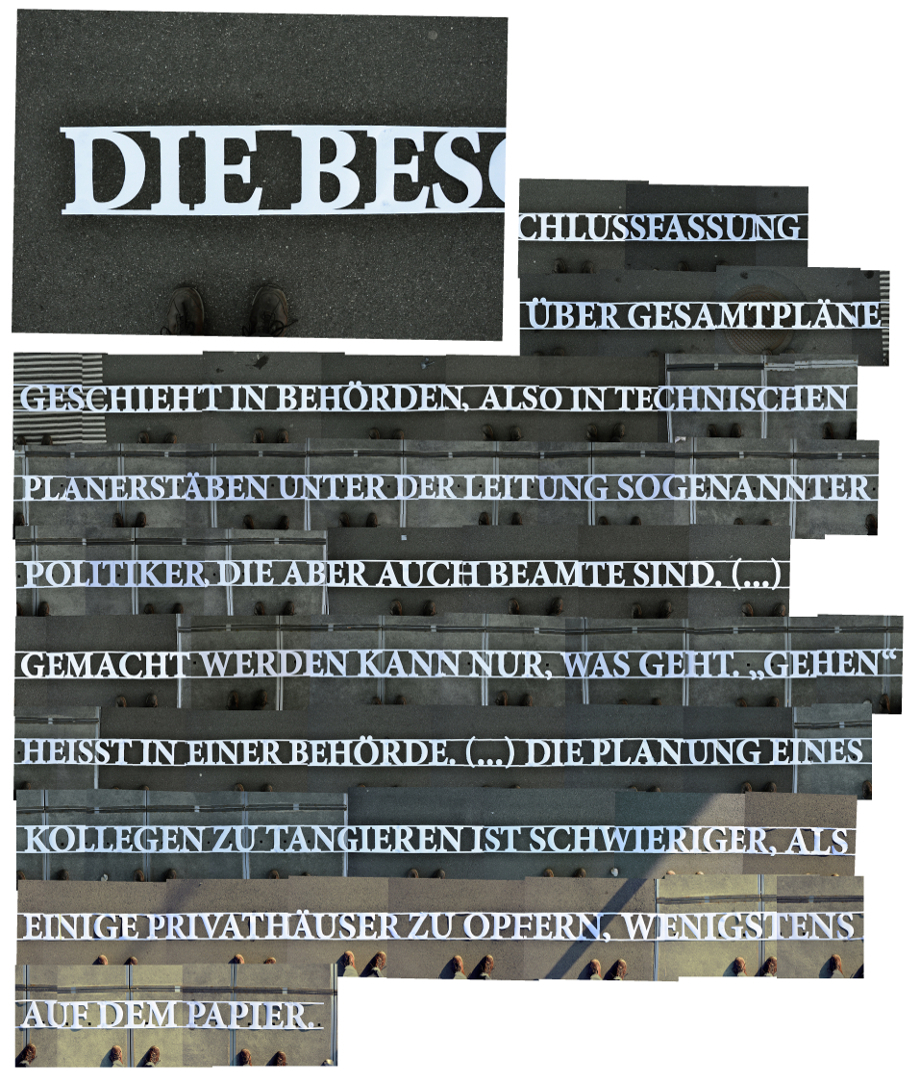
6. Sociology
The decision-making process regarding master plans occurs within public authorities; more accurately, decisions are made by technical planning staff under the direction of politicians, who are also public officials. (…) What can be done is what “works”. What does that mean in a public office? (…) Interfering with the planning process of a colleague is much more difficult than sacrificing private property, at least on paper.
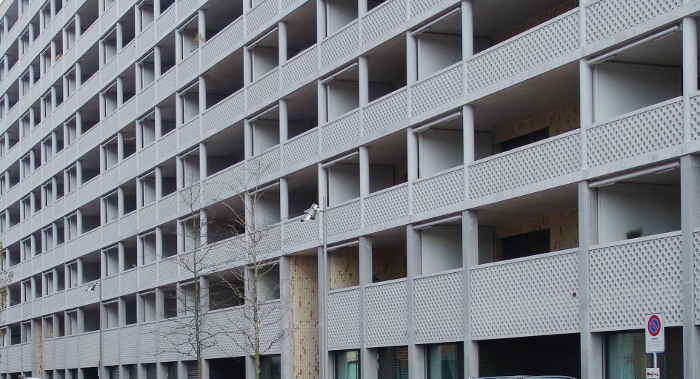

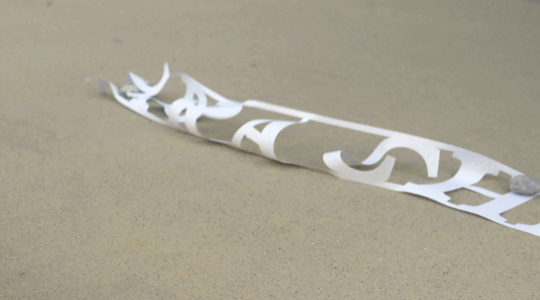
7. Language
Language is the tool for implementing and enforcing the measures decided upon by the authorities. The language of planners is the language of positivity; it says that we will all be happy with the outcome.
